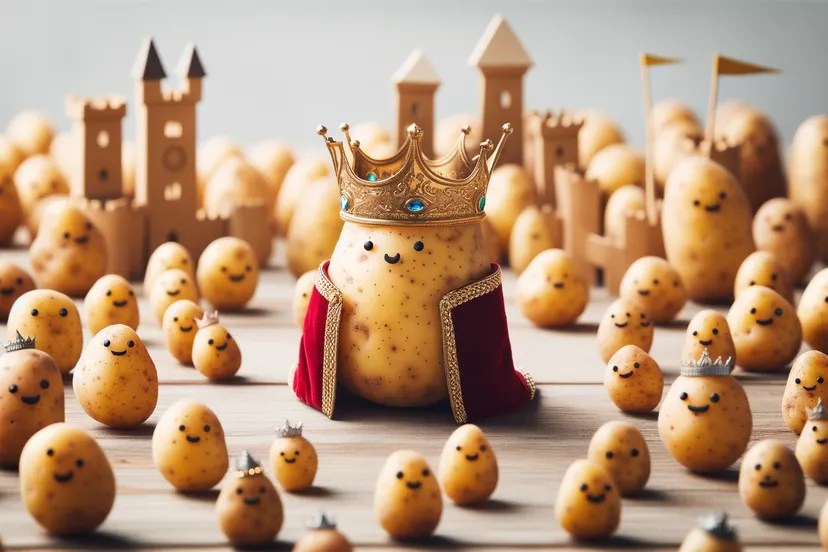Topics
up-to-the-minute
AI
Amazon
Image Credits:Bryce Durbin / TechCrunch
Apps
Biotech & Health
Climate

An image generated by DALL-E 3.Image Credits:OpenAI
Cloud Computing
commercialism
Crypto
Enterprise
EVs
Fintech
Fundraising
Gadgets
Gaming
Government & Policy
Hardware
layoff
Media & Entertainment
Meta
Microsoft
seclusion
Robotics
Security
societal
blank space
Startups
TikTok
Transportation
speculation
More from TechCrunch
Events
Startup Battlefield
StrictlyVC
newssheet
Podcasts
video
Partner Content
TechCrunch Brand Studio
Crunchboard
get hold of Us
OpenAI has “ hash out and debated quite extensively ” when to release a peter that can determine whether an image was made with DALL - E 3 , OpenAI ’s generative AI art exemplar , or not . But the startup is n’t close to making a conclusion anytime shortly .
That ’s accord to Sandhini Agarwal , an OpenAI research worker who sharpen on base hit and policy , who spoke with TechCrunch in a phone interview this week . She say that , while the classifier tool ’s truth is “ really good ” — at least by her approximation — it has n’t meet OpenAI ’s door for quality .
“ There ’s this doubt of putting out a tool that ’s somewhat unreliable , given that decisions it could make could significantly affect exposure , like whether a work is viewed as paint by an creative person or unauthentic and misleading , ” Agarwal said .
OpenAI ’s point truth for the tool seems to be extraordinarily eminent . Mira Murati , OpenAI ’s chief technology military officer , saidthis week at The Wall Street Journal ’s Tech unrecorded group discussion that the classifier is “ 99 % ” reliable at determining if an unmodified photo was sire using DALL - Es 3 . Perhaps the finish is 100 % ; Agarwal would n’t say .
A bill of exchange OpenAI blog position shared with TechCrunch revealed this interesting tidbit :
“ [ The classifier ] remains over 95 % exact when [ an ] effigy has been capable to common types of alteration , such as cropping , resizing , JPEG compression , or when text or cutouts from real range of a function are superpose onto pocket-size portion of the generated image . ”
OpenAI ’s hesitancy could be tie to the disceptation surrounding its old public classifier peter , which was designed to detect AI - generated text not only from OpenAI ’s models , but from text - yield theoretical account liberate by third - party vendors . OpenAIpulledthe AI - written text edition detector over its “ low pace of truth , ” which had been wide criticized .
Join us at TechCrunch Sessions: AI
Exhibit at TechCrunch Sessions: AI
Agarwal imply that OpenAI is also advert up on the philosophical question of what , precisely , constitutes an AI - mother persona . Artwork return from scratch by DALL - einsteinium 3 qualifies , obviously . But what about an image from DALL - E 3 that ’s get going through several rounds of edits , has been combined with other mental image and then was run through a few post - processing filters ? It ’s less clear .
“ At that point , should that image be considered something AI - generate or not ? , ” Agarwal said . “ Right now , we ’re trying to navigate this query , and we really want to hear from artist and people who ’d be importantly impacted by such [ classifier ] tool . ”
A act of organizations — not just OpenAI — are explore watermarking and detection techniques for generative medium as AIdeepfakesproliferate .
DeepMind recently proposed a specification , SynthID , to score AI - get image in a way that ’s imperceptible to the human eye but can be spot by a specialised sensing element . French startupImatag , launched in 2020 , offers a watermarking puppet that it claims is n’t affect by resizing , cropping , redaction or compression images , similar to SynthID . Yet another business firm , Steg . AI , engage an AI model to apply watermarks that hold out resizing and other edits .
The problems is , the industry has yet to conflate around a unmarried watermarking or detection standard . Even if it does , there ’s no guarantee that the watermarks — and detectors for that affair — wo n’t bedefeatable .
I ask Agarwal whether OpenAI ’s image classifier would ever fend for detecting images create with other , non - OpenAI generative peter . She would n’t commit to that , but did say that — depending on the response of the look-alike classifier tool as it exists today — it ’s an boulevard OpenAI would see exploring .
“ One of the reasons why flop now [ the classifier is ] DALL - einsteinium 3 - specific is because that ’s , technically , a much more manipulable trouble , ” Agarwal said . “ [ A general detector ] is n’t something we ’re doing right now … But bet on where [ the classifier tool ] get going , I ’m not say we ’ll never do it . ”